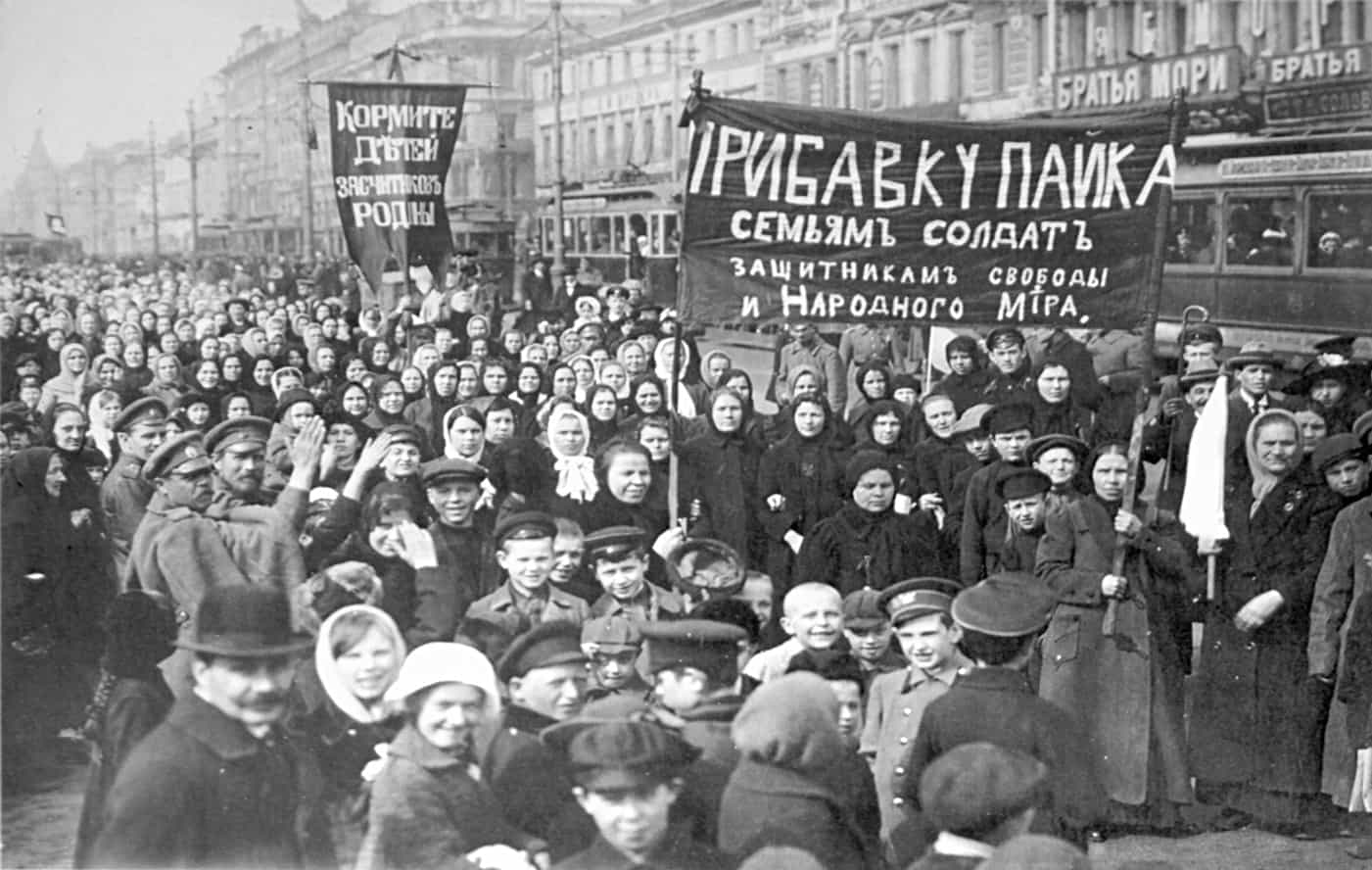A telegram describing revolutionary events that began on February 23rd 1917 was sent to the Tsar by Mikhail Rodzianko who wrote that “The situation is serious. The capital is in a state of anarchy. The Government is paralyzed. Transport service and the supply of food and fuel have become completely disrupted. General discontent is growing … There must be no delay. Any procrastination is tantamount to death.”
The Bourgeois Democratic Revolution began on this day in the Russian capital of Petrograd (modern day’s Saint Petersburg). In 1917, rioters took to the streets for eight continuous days. The city fell immediately into chaos. Most of the country’s soldiers were on the front lines fighting. Many were killed and the Tsar was overthrown. The critical state of things was a long time in the making.

Demonstrations that took place that day did not blow up like they would later in that same year, when the entire country erupted. It is fair to say, what happened in Petrograd lit the fuse to the dynamite stick that would later explode. A variety of factors sparked the events on February 23rd that fueled the unplanned demonstration. In general, the Russian people boiling with discontent. Economic and social suffering were wide-spread. Much of it was made far worse by the impact World War I had on the country. Many who appeared on the streets were industrial workers and soldiers who had deserted their posts and returned home. Those loyal to their post and their country were guarding their posts in places far, far away from the city.
Bread rioters, along with the soldiers and industrial workers, took aim at the government because they had suffered for so long without food. High prices, food shortages, harvest failures, transportation problems and hoarding were all elements at play keeping the population hungry. The overarching sentiment people had toward their imperial rulers was that their monarch was failing them. Although the Tsar abolished serfdom and made other considerable efforts to modernism the country of Russia into an economically viable state of being, political, economic, and old social structures were proving to be incompatible with the monarchical structure. Many were of the belief, the entire system required an overhaul.
The caste system molded by serfdom was not eradicated by the Tsar putting an end to slavery. Peasant life was still difficult. Social and economic segregation were still very present. For those living in the cities and working, conditions were substandard. The industrial economy was not flourishing. The hungrier people became, the more willing they were to take to the streets. The February protestors demanded food, an end to Russian involvement in the World War and for an end to the Tsar’s rule. By February 27th the set government buildings on fire, took control of an arsenal and released the city’s prisoners. Eventually, they took control of the train stations. Finally, the Tsar abdicated and things calmed down until later that year when revolutionary desires spread through the entire country.

